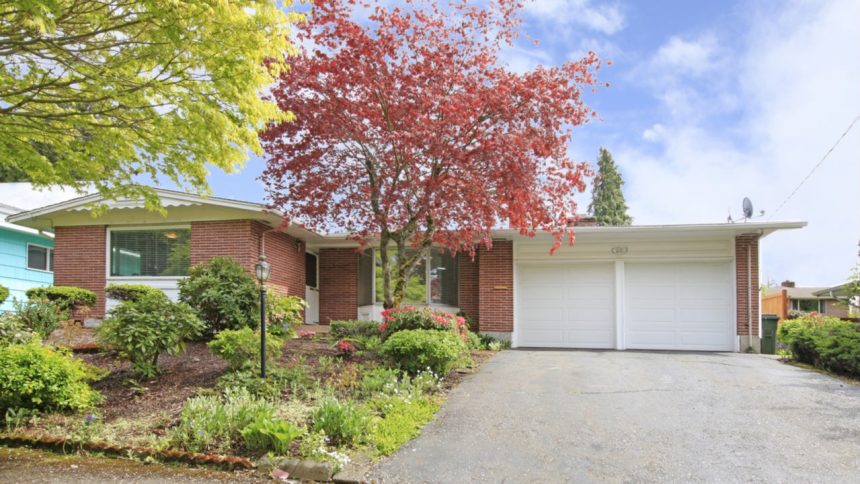Key takeaways
- A wraparound mortgage is a unique form of seller financing in which the seller keeps their mortgage and extends a loan to the buyer.
- To offer a wraparound mortgage, the seller must have an assumable mortgage.
- While popular with those who can’t qualify for traditional financing, wraparound mortgages carry risks for both buyers and sellers.
What is a wraparound mortgage?
A wraparound mortgage is a type of seller financing in which the seller retains the original mortgage on a home and acts as a lender to the buyer.
It’s far from a conventional loan, but a wraparound mortgage can be an opportunity for homebuyers struggling to get a mortgage and sellers struggling to sell a home or pay their mortgage.
To extend a wraparound mortgage, a seller must have an assumable loan.
What is an assumable loan?
An assumable mortgage is one where the outstanding mortgage and debt can be transferred to a new owner, along with the original loan terms. Most conventional loans aren’t assumable, but many government-backed mortgages, such as FHA, USDA and VA loans, are.
How do wraparound mortgages work?
In a wraparound mortgage, the buyer’s new loan “wraps around” the seller’s existing loan on the property. The buyer makes monthly payments to the seller, who, in turn, pays their own mortgage lender.
In many cases, wraparound loans have a higher interest rate than the original mortgage. As a result, the buyer’s monthly payments to the seller are often larger than the seller’s to their lender, allowing the seller to make a profit.
The buyer and seller must both agree to the wraparound mortgage, and the seller must obtain permission from their lender.
After the terms are in place and the buyer signs a promissory note, the seller might transfer the home’s title to the buyer right away or once the loan is repaid. Once the title is transferred, the buyer is considered the property owner.
Wraparound mortgages are in a junior or second lien position. That means that if the buyer can’t or doesn’t make payments, the original mortgage lender — not the home seller — would be repaid first from the proceeds of a foreclosure sale. The seller would recoup their losses only after the lender gets its money back.
Wraparound mortgage example
Say a seller has a mortgage balance of $100,000 on a home worth $200,000. The seller is repaying the loan with a 30-year mortgage at a rate of 5 percent.
The seller finds an interested buyer who is unable to qualify for traditional financing and offers the buyer a wraparound loan of $150,000, with a $50,000 down payment, at an interest rate of 7 percent.
The seller will pocket the $50,000 down payment right away, as well as the $150,000 loan balance as the borrower makes payments — which includes $50,000 in excess of the original balance. He or she will also receive the difference between the new and the original interest rate.
The wraparound mortgage doesn’t have to be greater than the original mortgage. The buyer and seller can agree to a loan that covers only the current principal.
Wraparound mortgage benefits
Wraparound mortgages can have advantages for the buyer and the seller of a home.
Benefits for buyers
- Easier to obtain. “A wraparound mortgage is a good idea when the buyer does not qualify for any mortgage products with lenders,” says Benjamin Schandelson, a mortgage loan originator and head of marketing with MJS Financial, LLC in Boca Raton, Florida.
- Smaller loan. The buyer might be able to borrow less or get a lower interest rate than if they were applying for their own loan.
- Simpler, cheaper transaction. Buyers won’t have to wait through a lender’s long underwriting process and may not have to pay many closing costs.
Benefits for sellers
- Profit potential. Along with any appreciation in the home price, sellers can pocket the difference between their remaining mortgage balance and the wraparound mortgage, as well as any difference between their original interest rate and the buyer’s rate.
- Selling strategy. Offering a wraparound mortgage might increase interest in a home, attracting buyers who might not normally be able to afford it — especially if you’re having a hard time selling.
Wraparound mortgage risks
No mortgage is perfect. Both buyers and sellers face some wraparound mortgage risks.
Risks for buyers
- Unreliable sellers. “The biggest risk is the seller defaulting on the original mortgage, which can put the property the buyer is living in into foreclosure,” Schandelson says. If the seller defaults on their own loan, the lender can seize the home, even if your payment record is spotless. You also have to trust the mortgage was assumable in the first place; if the seller didn’t get permission for the wraparound, the lender could also foreclose or demand immediate payment of the loan balance.
- More expensive terms. The interest the seller is charging you may exceed conventional mortgage rates.
Risks for sellers
- Paperwork. Setting up a wraparound mortgage means you’re now responsible for sending out statements and invoices, keeping track of payments, maintaining records and accounting for the income on your tax return. If you don’t file properly, the IRS will not be happy.
- Unreliable buyers. If the buyer doesn’t make their payments, you’re still on the hook to your lender. “This means you either need to come out of pocket or miss payments, which can hurt your credit score,” Schandelson says. “You might also need to take legal action against the buyer for not paying, which can be costly.”
Is a wraparound mortgage right for you?
A wraparound mortgage is a creative way for a buyer and seller to make a transaction happen, especially in today’s challenging real estate environment. If you’re a prospective buyer, struggling to qualify for a mortgage, a wraparound mortgage could get you into a home. And as the seller’s market of the past several years softens, a wraparound mortgage could be a way to offload a hard-to-sell property.
But there are risks on both sides. Before moving forward with a wraparound mortgage, it’s smart to consult with a real estate attorney who can advise on the risks and make sure agreements are properly drawn up to protect all parties. For example, buyers might want to add a clause that lets them make some of their payments directly to the lender. Sellers might want buyers to put a certain sum in escrow, as a cushion if the buyer is tardy or delinquent with payments.
Alternatives to a wraparound mortgage
Although they can help buyers with poor credit or in high interest-rate environments, wraparound mortgages aren’t the only option. Consider these alternatives:
- Government-backed loans. These mortgages offer low down payment requirements and are available to borrowers who don’t have great credit scores. FHA loans come with the fewest restrictions. USDA loans and VA loans offer generous terms, but you can only qualify if you’re buying in an eligible rural area (USDA) or if you are or have been in the military (VA).
- HFA loan. Available solely through state housing finance agencies, HFA loans are geared toward first-time and low-to-moderate income homebuyers. To be eligible, you may have to buy in a certain location or choose a home within specific price limits.
- Conventional 97 loan. Available through the government-sponsored entity Fannie Mae, this is a conventional mortgage with a 3-percent down payment requirement.
Sellers might also consider alternatives, such as:
- Renting. Using the home as an investment property could still bring significant profit with a similar risk level. You could give tenants long-term leases or set up a rent-to-own agreement.
- Renovating. If you’re selling because you need more space or want a nicer home, consider trying to expand or renovate your place, instead. Some strategic remodeling can make your home more valuable down the road, too.
Why we ask for feedback
Your feedback helps us improve our content and services. It takes less than a minute to
complete.
Your responses are anonymous and will only be used for improving our website.
Help us improve our content
Read the full article here














